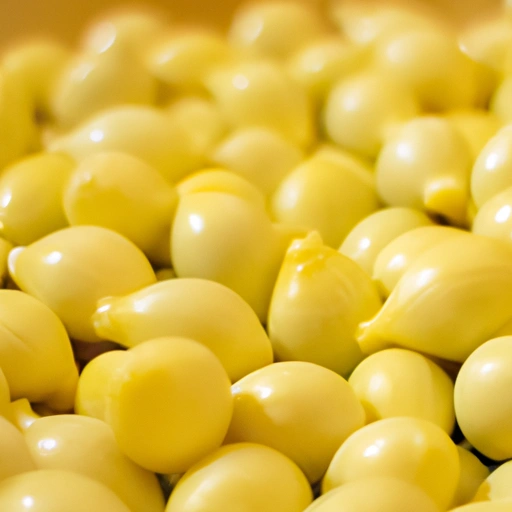Ginkgo Nut
Description

Ginkgo nut, the edible seed of the Ginkgo biloba tree, is a prized culinary ingredient in many Asian dishes. Known for its distinctive flavor and texture, the ginkgo nut has become increasingly popular in various cuisines across the globe. Its subtle bitterness and slight sweetness make it a unique addition to an array of recipes. As a versatile ingredient, ginkgo nuts can be measured in various units to cater to recipes from different regions, including Asian (azjan), American, and European units.
Common uses
Ginkgo nuts are commonly used in soups, porridges, desserts, and as a garnish for various dishes. In Asian cuisine, they are often seen in celebratory meals and festive occasions. Their unique flavor profile lends itself well to both sweet and savory applications.
Nutritional value
Calories
A one-ounce serving (approximately 28 grams or about 2 tablespoons) of ginkgo nuts contains around 70 calories.
Protein
Ginkgo nuts offer about 1.6 grams of protein per ounce.
Fat
These nuts provide 0.5 to 1 gram of fat per ounce, with a mix of polyunsaturated, monounsaturated, and saturated fats.
Carbohydrates
The carbohydrate content is about 14 grams per ounce, with a small amount of dietary fiber.
Vitamins
While not particularly high in vitamins, ginkgo nuts do contain small amounts of vitamin C and B-complex vitamins.
Minerals
Ginkgo nuts are a source of minerals such as potassium, magnesium, and phosphorus.
Health benefits
Ginkgo nuts have been associated with several health benefits, including improved cognitive function, antioxidant effects, and potential improvements in blood circulation.
Potential risks
Raw ginkgo nuts contain toxins that can be harmful if consumed in large quantities. It is important to cook them properly to reduce these risks. Additionally, individuals with nut allergies or those taking certain medications should consult with a healthcare professional before consuming ginkgo nuts.
Common recipes
Traditional Asian recipes like congee, ginkgo nut mooncakes, and bird's nest soup often feature ginkgo nuts as a key ingredient.
Cooking methods
Ginkgo nuts can be boiled, roasted, or pan-fried. They are sometimes blanched to remove their outer shells and bitter membranes.
Pairing with other ingredients
They pair well with other mildly flavored ingredients such as tofu, seafood, and rice, allowing their unique flavor to stand out.
Summary
Ginkgo nuts are a unique and nutritious ingredient, suitable for a variety of dishes. They provide a distinctive taste and are associated with several health benefits, but must be prepared properly to avoid potential risks. Whether you're an experienced chef or a home cook looking to try something new, ginkgo nuts are worth exploring in your culinary endeavors.